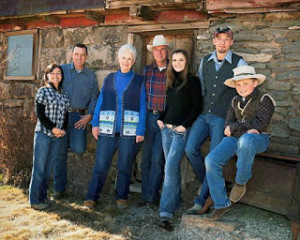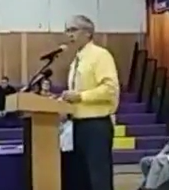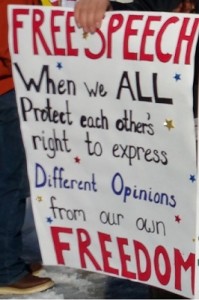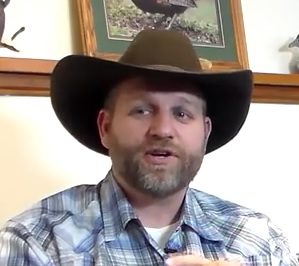In Burns with the Oath Keepers
By Shari Dovale, written February 7, 2016
This article was originally written for oathkeepers.org
A few weeks ago, I was asked by the Oath Keepers to go to Burns, Oregon. They needed another media crew there to help determine the feel of local residents concerning the occupation of the Malheur Wildlife Refuge.
I am an Oath Keeper and a journalist. I know there had been wildly alternating reports coming out of Burns, and I, like everyone else, wanted the true story. I was happy to go.
One of the first things I learned upon my arrival in Burns was that the Oath Keepers had had a presence there since before January 2016. Not attempting to make headlines, the Oath Keepers provided security when needed and contributed to mediation between varying groups.
Documenting events and advising when asked, the Oath Keepers made a difference in Burns. Hearing these stories made me prouder still to be a part of the organization.

The story really begins with Dwight Hammond. His difficulties with the Bureau of Land Management (BLM) date back decades. Without turning this into a detailed account of the history of the dispute, we will just say that the long-running battle with the BLM resulted in a conviction for Dwight and his son, Steven, in June 2012. The arson charges they were convicted of stemmed from a fire in 2001, and another in 2006.
The statute under which they were convicted and sentenced, the Federal Anti-terrorism and Effective Death Penalty Act of 1996, carries a minimum sentence of 5 years in prison, and a maximum sentence of death. When the Hammonds were originally sentenced, they argued that the five-year mandatory minimum terms were unconstitutional. Judge Michael Hogan agreed and imposed sentences well below what the law required.
On January 4, 2013 Dwight and Steven reported to prison. They fulfilled their sentences, Dwight 3 months and Steven 12 months. Dwight was released in March 2013 and Steven in January 2014.
About June of 2014, the prosecution filed appeals to re-sentence the men to the full minimum of 5 years each. This appeal was successful and the Hammonds reported back to prison on January 4, 2016.
On January 2, 2016, a rally was held in Burns to protest the return to prison for the Hammond men. Many saw this as a case of ‘Double Jeopardy’ and sour grapes by the federal government for not successfully bullying the Hammonds into turning over their ranch to the government.
It is still the belief of many that the ultimate goal of the BLM, and other federal agencies, is to force the Hammonds to turn over their lands, and the mineral rights, to the government.
The rally on January 2 was a peaceful rally. However, at the end of the day, a group led by Ammon Bundy, son of famed Nevada rancher Cliven Bundy, secured the Malheur Wildlife Refuge and began an occupation of the property. Aided by many, including Arizona rancher Robert “LaVoy” Finicum, the group began to call themselves the Citizens for Constitutional Freedom (C4CF).
Though the protest began about the Hammonds, it soon morphed into a referendum against the BLM and other Federal agencies. The occupiers felt the need to educate the public about the vast overreach of the Federal government.
US Constitution, Article I, Sec. 8, Clause 17 states, The Congress shall have power: To exercise exclusive Legislation in all Cases whatsoever, over such District (not exceeding ten Miles square) as may, by Cession of particular States, and the Acceptance of Congress, become the Seat of the Government of the United States, and to exercise like Authority over all Places purchased by the Consent of the Legislature of the State in which the Same shall be, for the Erection of Forts, Magazines, Arsenals, dock-Yards, and other needful Buildings.
This was their message, the United States Constitution. The belief that the Constitution was the supreme law of the land, and the belief that the Constitution was worth defending.
The C4CF continued to frequent businesses in Burns. Spending their money and supporting the town, they spoke with as many as would sit and talk to them.
There were not many residents in the beginning that were pleased with the take over of the refuge. Though most understood the basic message that Bundy’s group was sharing, they were unused to citizen action in this form. Civil disobedience was not a concept they were comfortable with.
Burns is a small town in a slightly populated county in rural eastern Oregon. The local government controls nearly all aspects of life. They employ a great amount of the residents. Judge Steve Grasty is the man that holds the strings throughout the area.
When the occupation began Judge Grasty reacted. He began by locking down the courthouse. He had barricades placed to surround the building, and armed guards patrolled the grounds. He forbade anyone to enter on what he considered ‘unnecessary’ business.
A resident told me they wished to go into the courthouse to research some documents for their property. They were forbidden. Normal, everyday business in the courthouse has come to a halt.

The residents decided they needed to hear what Bundy had to say, so they could decide afterwards how they felt about it. They requested the use of a county building for this purpose. First, they requested the use of the main building at their fairgrounds. The request was denied by Judge Grasty. They requested the use of the Senior Center in town and this request was also denied by Grasty.
He made a public statement at a community meeting on January 19, 2016 saying that Bundy was promoting criminal activity, therefore any group that wanted him to speak would not be allowed access to a county facility.
This did not go over well with residents. Regardless of whether they agreed with Bundy’s message, they did not appreciate being censored by Grasty as to whether or not they should be free to assemble and hear whom they chose.
There were people that suggested a work around, “Just meet at someone’s home.” This may sound like a viable solution, yet it does not solve the issue of their right to Freely Assemble, as guaranteed by the Constitution.

Many residents were livid. They saw it as a blatant disregard of their civil rights, including their right to free speech. This action by Judge Grasty lost him quite a lot of support that he previously enjoyed.
The scales were tipping in favor of the protesters.
Several residents held a rally on the streets of Burns. This rally was not about the Refuge. It was not about Bundy or his group. This rally was strictly for residents, by residents, about the civil rights they felt were being denied.

Many of the protesters were still afraid to speak on camera. They cited retaliation by the local government, and Judge Grasty, against their families, as a very real fear.
But the town was still divided.
When the militia groups came to town, many seemed disruptive and troublesome. Several residents expressed their concerns that the militia groups wanted to “make the news” rather than help to resolve the current issues.
Various locals expressed to me their concerns that so many strangers had taken up residence in their town carrying weapons. They understood and appreciated the second amendment, yet seeing so many weapons arriving at one time felt very intimidating to them.
Many of the residents that I spoke with were friends with Steve Grasty and Sheriff David Ward. They felt the men were honorable and should not be vilified. “Good men sometimes have to make hard decisions,” one person said.
Yet, there were many people that believed the government would turn their town into a ghost town. That the residents would be herded into cities to live, and their small town way of life would cease.
One woman explained to me that ranching was the way of life in Harney County. Her husband used to work for the ranchers, but not anymore. The government has taken away many of the ranches, therefore, many of the jobs. Her family was barely hanging on with her custodial work.
She also did not think you could “fight City Hall.”
That seemed to be the major message that residents began discussing. If the government wanted something done a certain way, what could anyone do about it? They were used to a certain way of life, yet never thought about whether or not they, as individuals, could change the rules and make it better.

I had the pleasure of spending time with LaVoy Finicum during my time in Oregon. I visited the Refuge on multiple occasions. LaVoy was one of the first people I met and he made me feel safe, secure and very welcome.
LaVoy knew quite a lot about the Refuge and gave me a tour. He also showed me the artifacts referenced by the Burns-Paiute Tribe. I was grieved to see the poor treatment the artifacts had received over the past several decades.
LaVoy, and everyone at the refuge, showed every willingness to talk openly to me. Though I told them I would not discuss on camera any issue they felt uncomfortable with, they never once refused a subject. The transparency was a model the government would do well to emulate.
This openness, that all members appeared to share, was an important point to most residents. Several residents went to the Refuge to see for themselves what was happening. They were impressed with the improvements the group was making. The facilities had fallen into disrepair and cleanliness was an additional issue. The visitors that spoke to me all noted the changes.

The message that Bundy’s group was spreading was beginning to be heard further away. After about 3 weeks, the people of Grant County, just to the north of Burns, requested to meet with Ammon and his group. A townhall meeting was scheduled for the January 26, 2016 in the town of John Day.
Oregon’s US Senator Ron Wyden was quoted as saying the standoff was “a situation where the virus was spreading,” and action needed to be taken.
Several hundred people showed up for this townhall. Bundy’s group never arrived.
About 20 miles north of Burns, the FBI and the Oregon State Police set up a roadblock. They had snipers in the trees and dozens of Law Enforcement Officers on the scene. According to their statements, they were executing a routine “traffic stop.”
The traffic stop ended in the arrest of Ammon Bundy and several members of his group. It also resulted in the death of LaVoy Finicum, spokesman for the C4CF.
Finicum’s death shocked the community. Though most people expected something to happen, no one was willing to say they expected someone to die. Finicum was well liked and respected. It has hit many very hard.
Ammon Bundy was transferred to Portland. The militia mostly left Burns after several days. A few more rallies and the town was quiet.
But the pendulum is still moving. Many residents have found their voice. They do not want the momentum to end. They do not want things to return to the status quo. They are unhappy with their government, and still need guidance to resolve key issues. But they do not want a take-over of their town.
Burns is their home. It is where they chose to raise their children. It is where they want to spend their lives.
I have been asked by a few residents to return in a couple of weeks to see how they are doing. I am looking forward to it. And I am pretty sure that I am going to find Oath Keepers there when I arrive.





